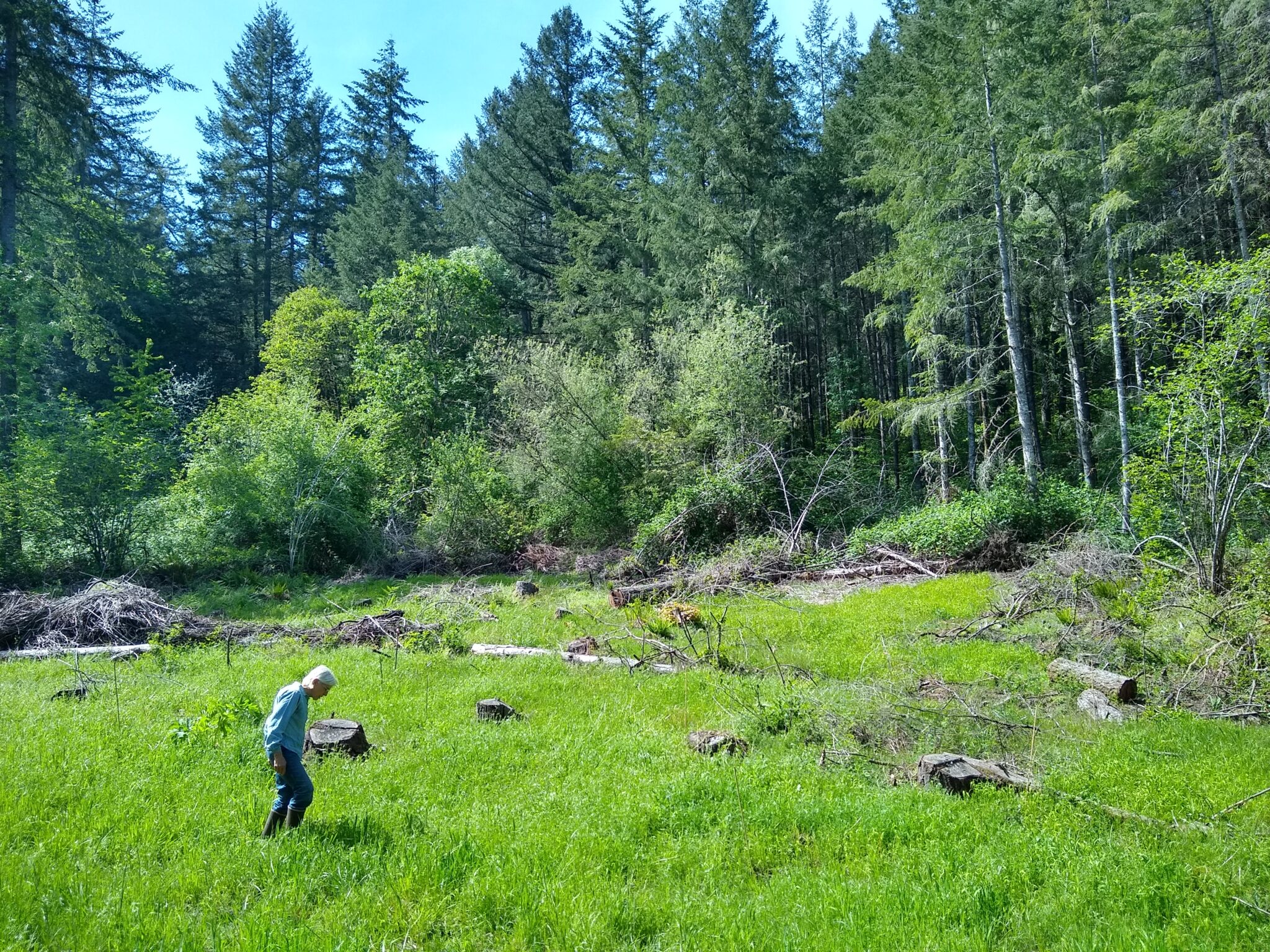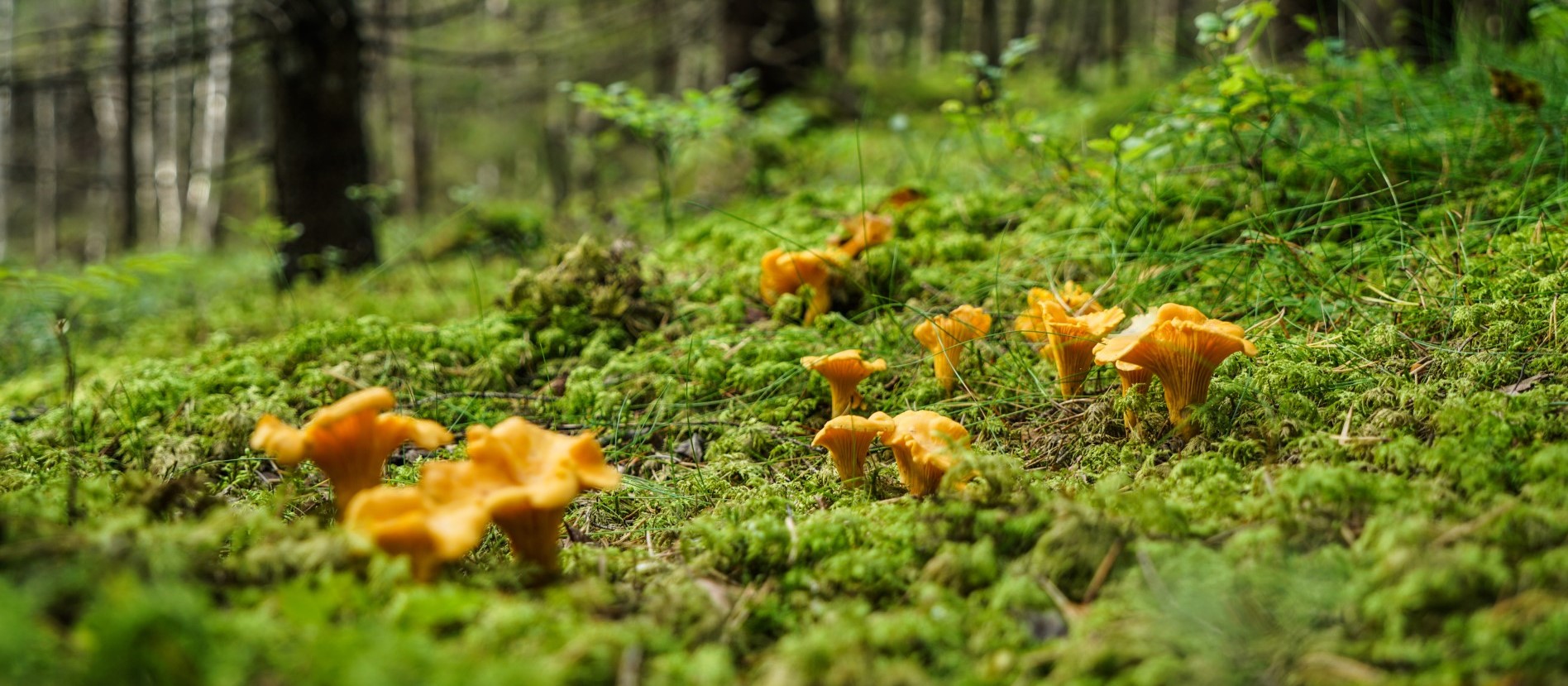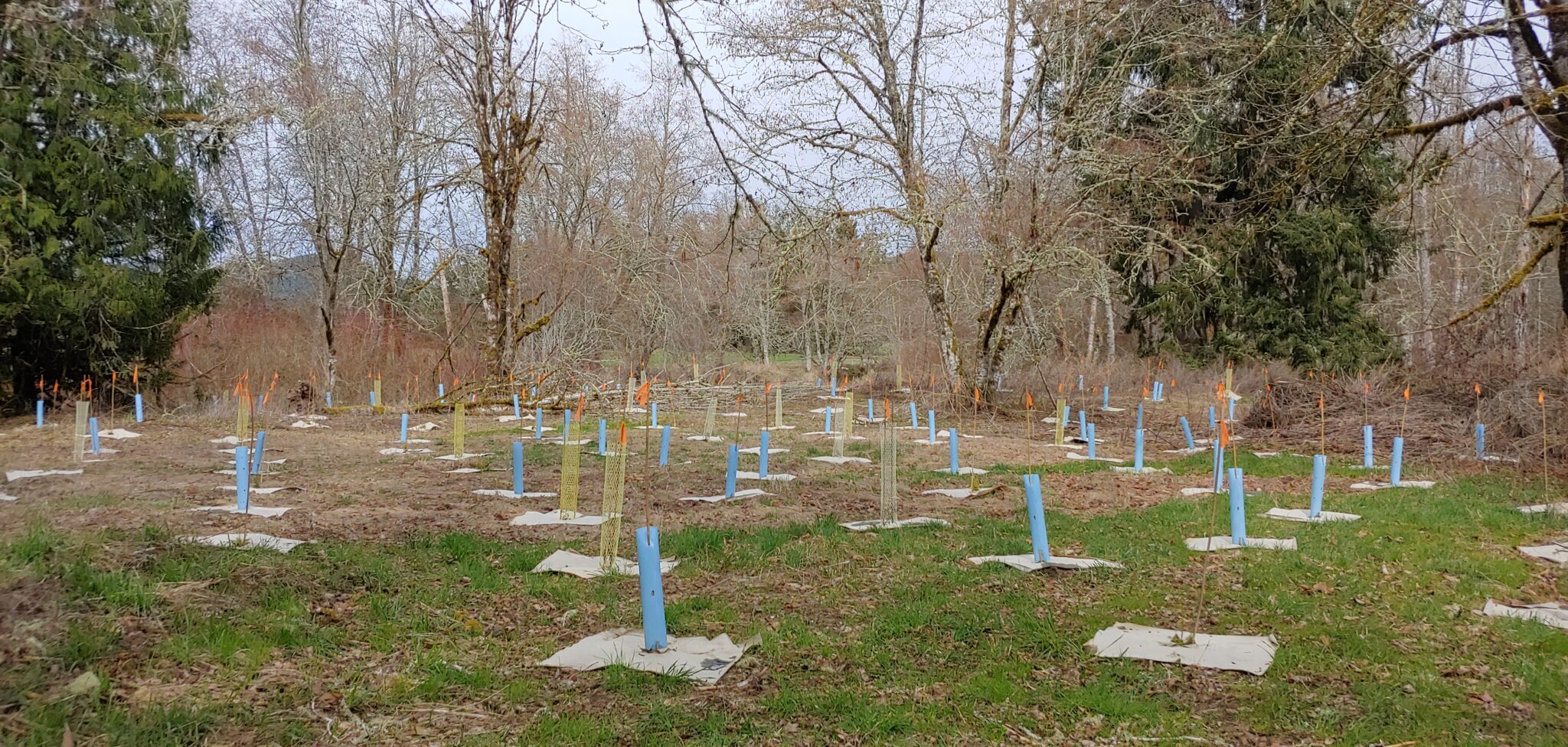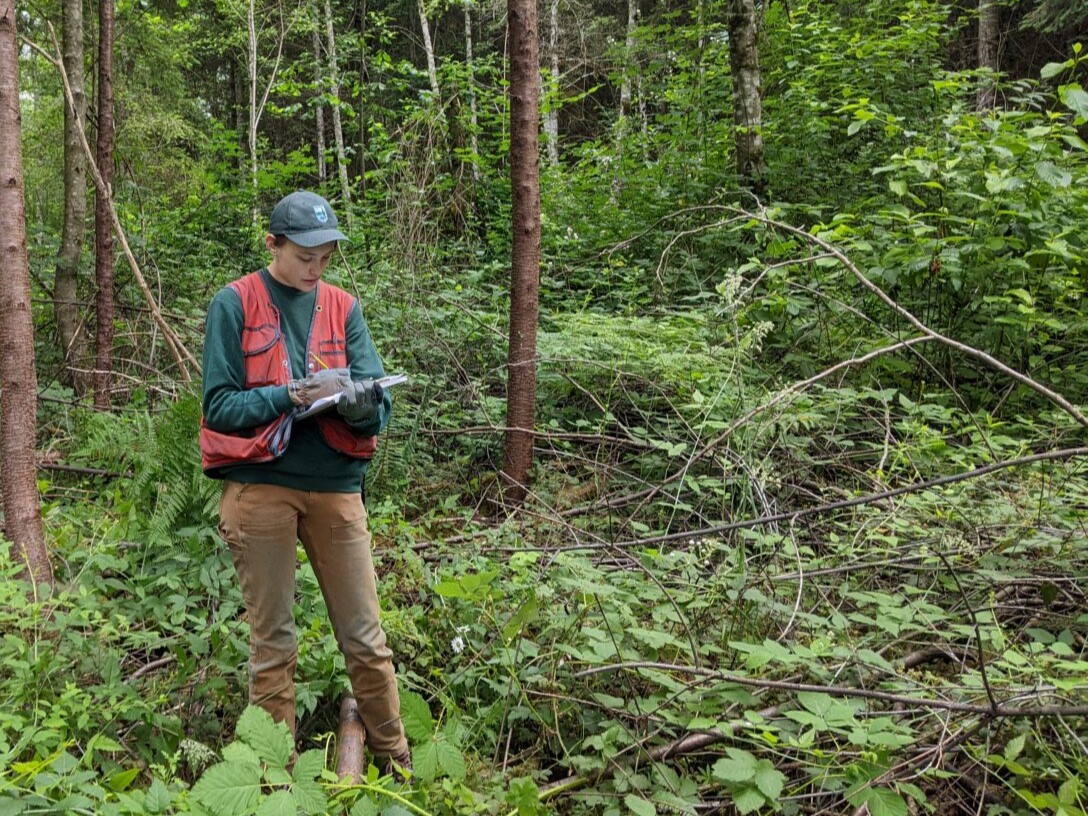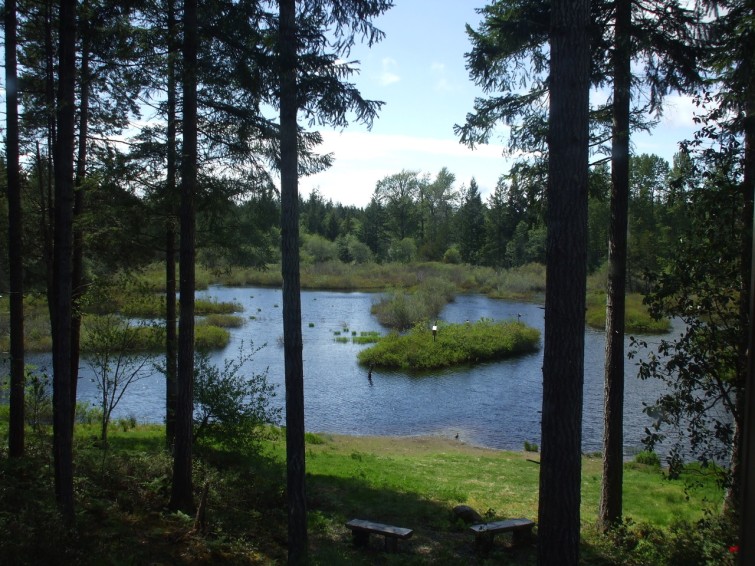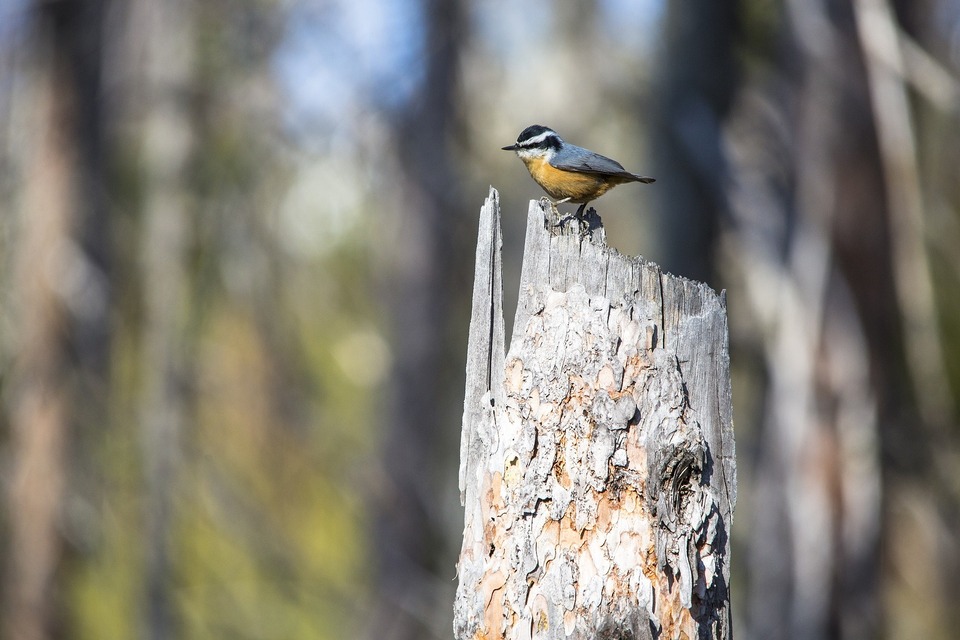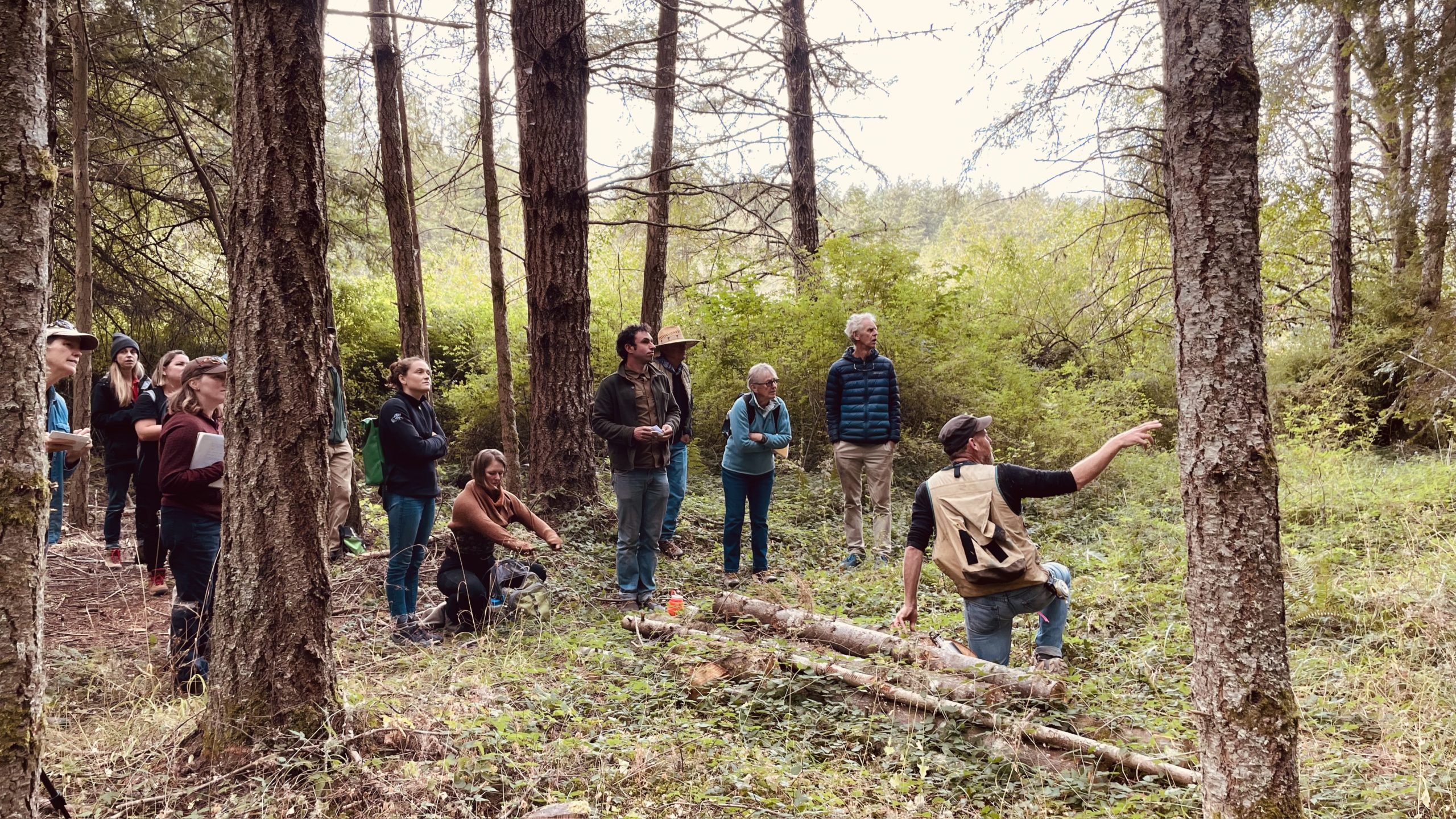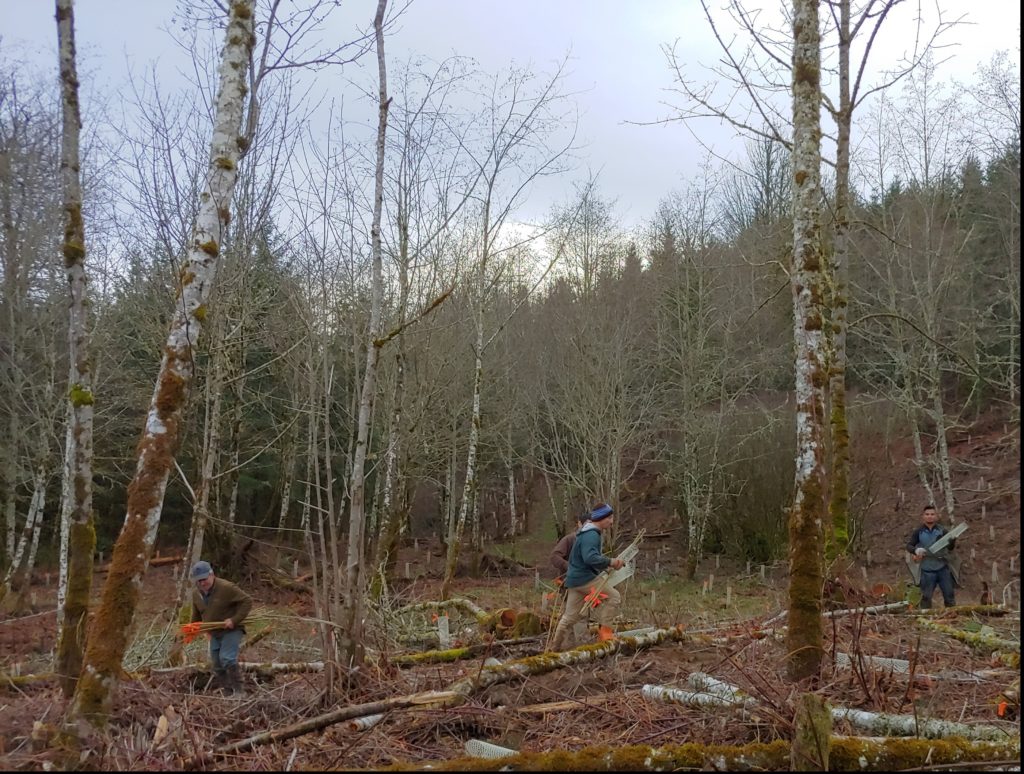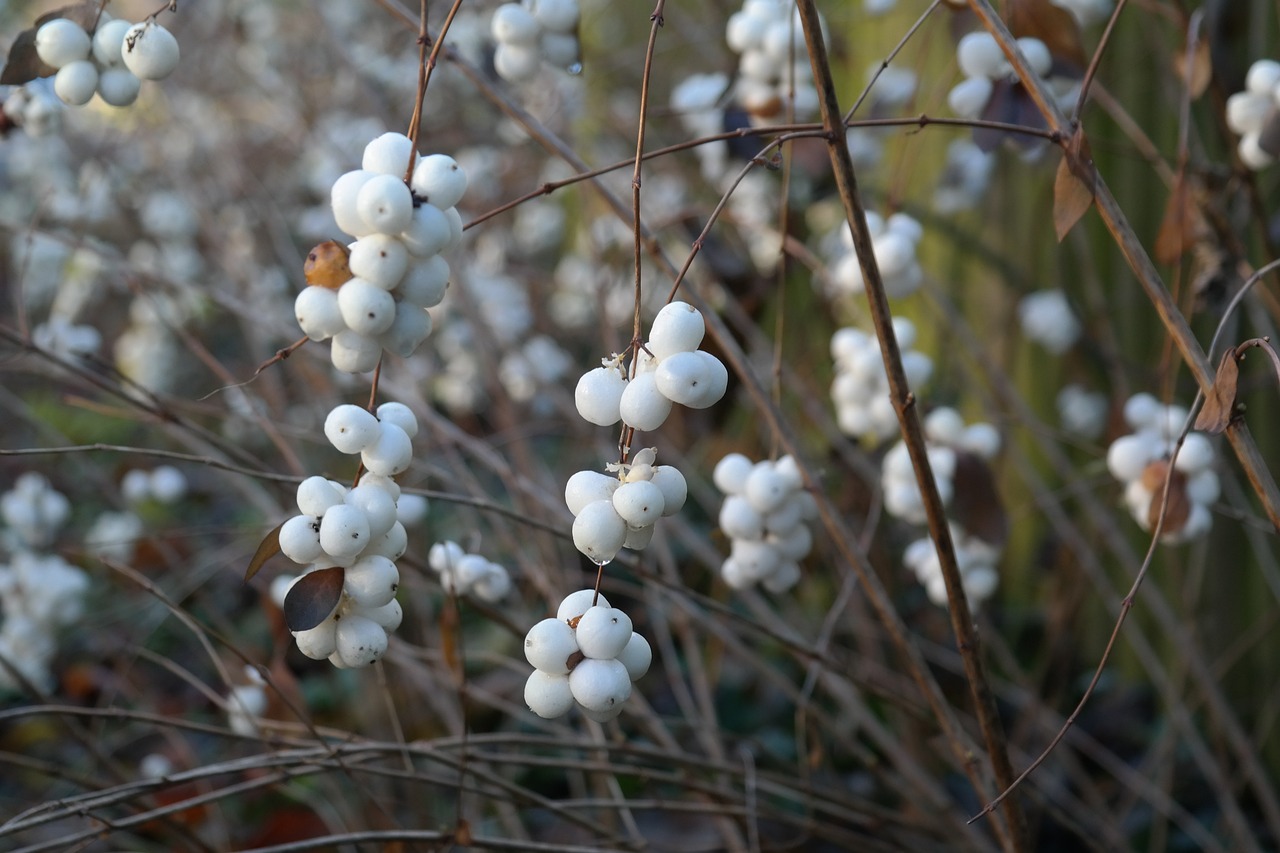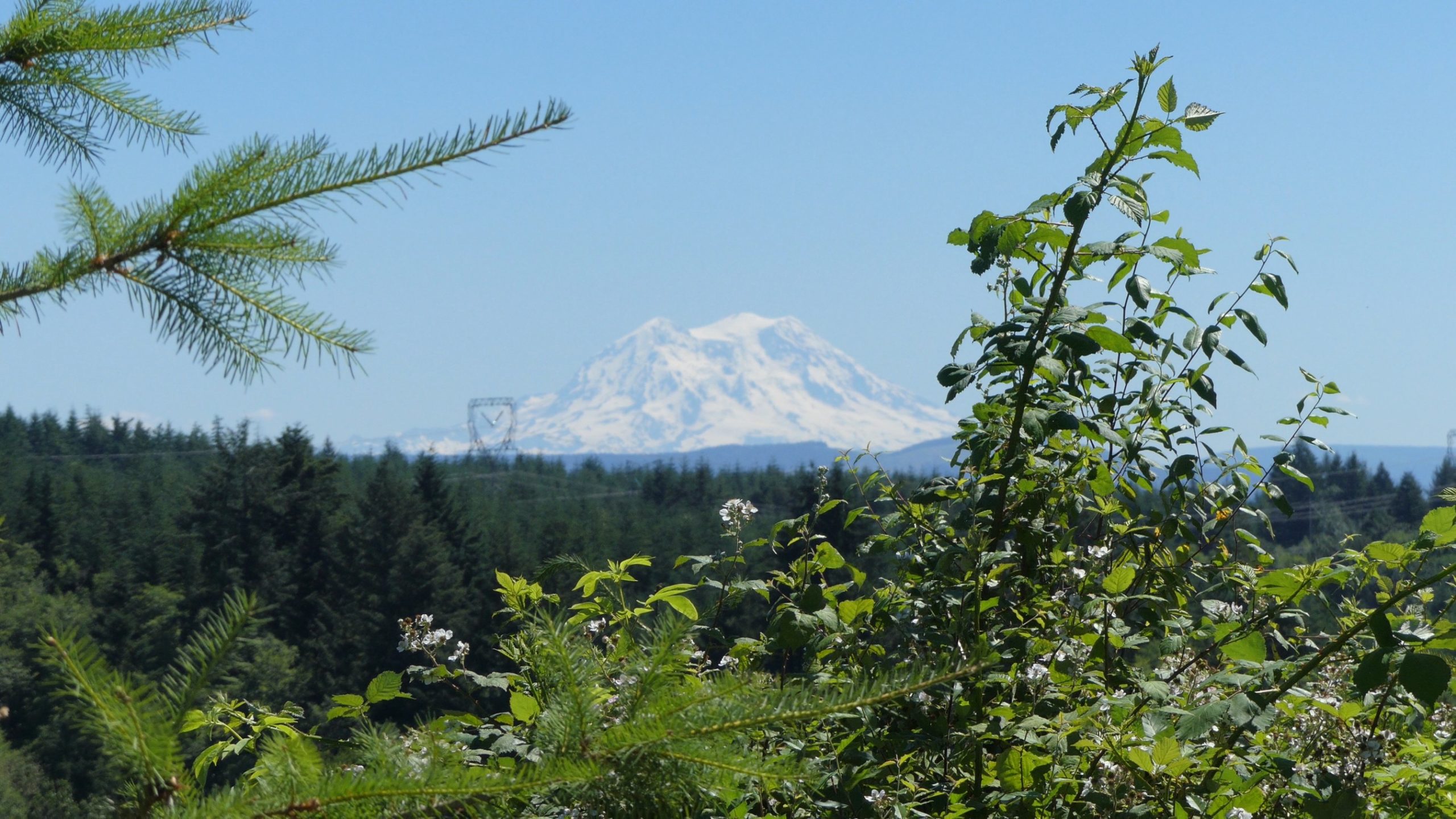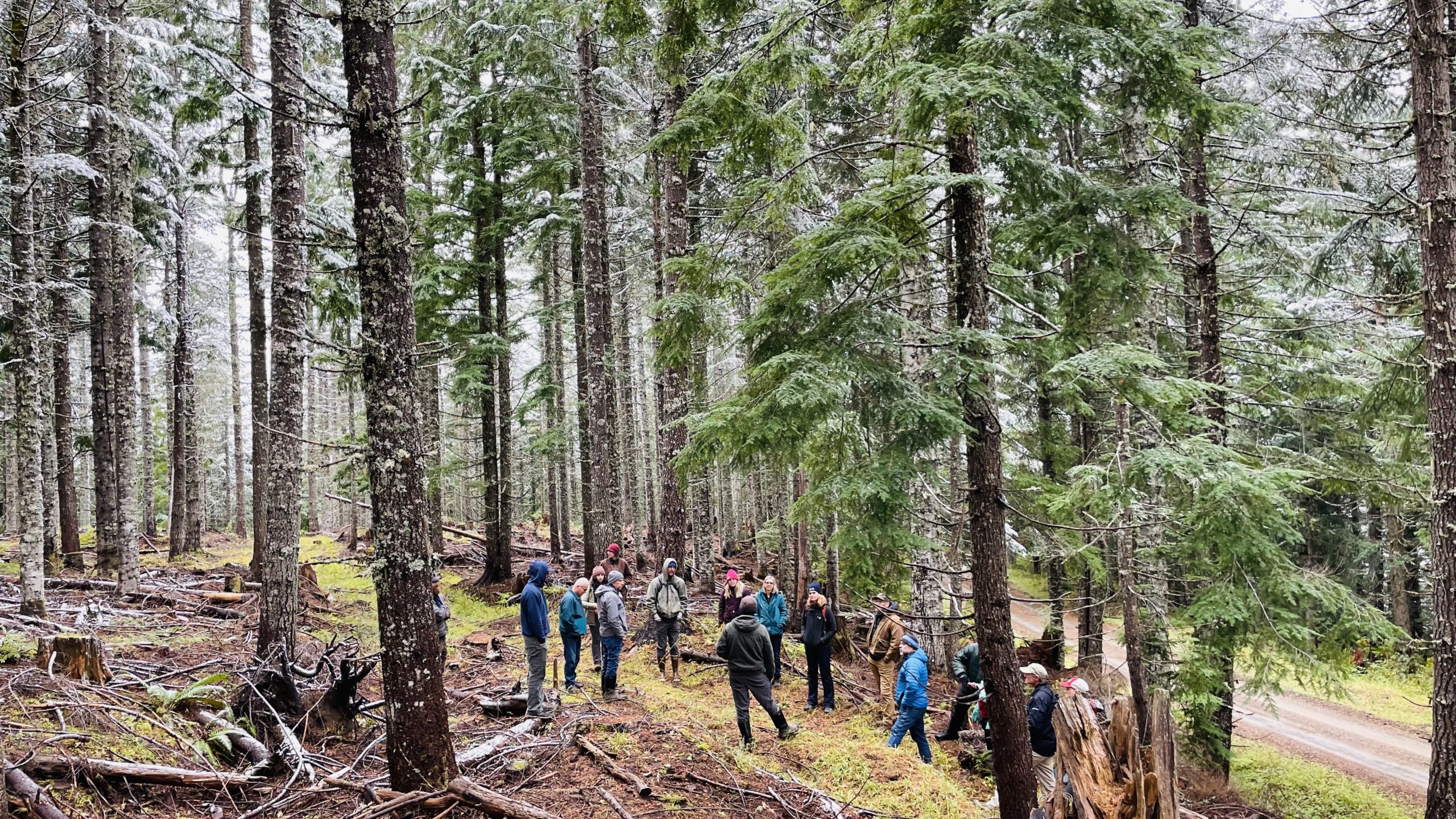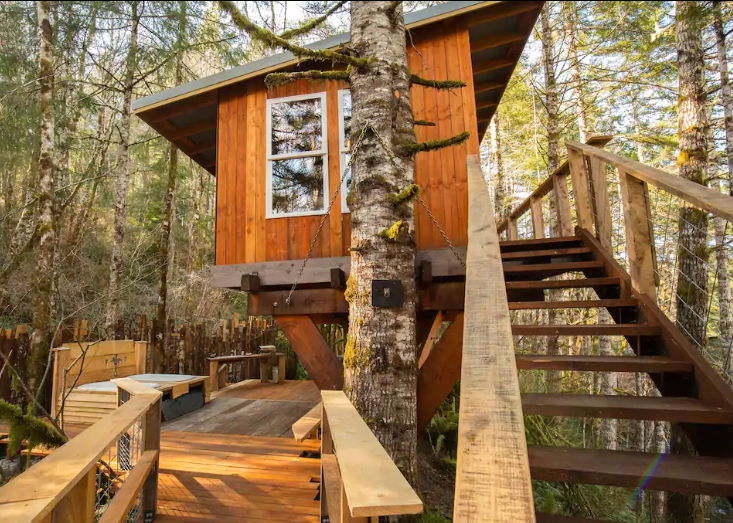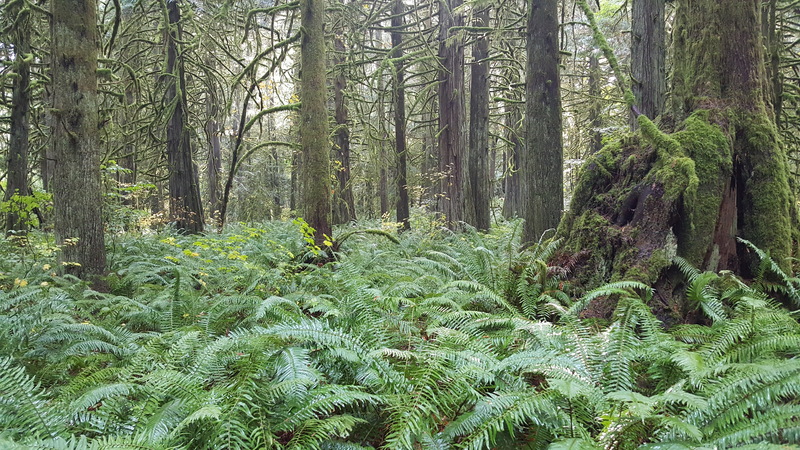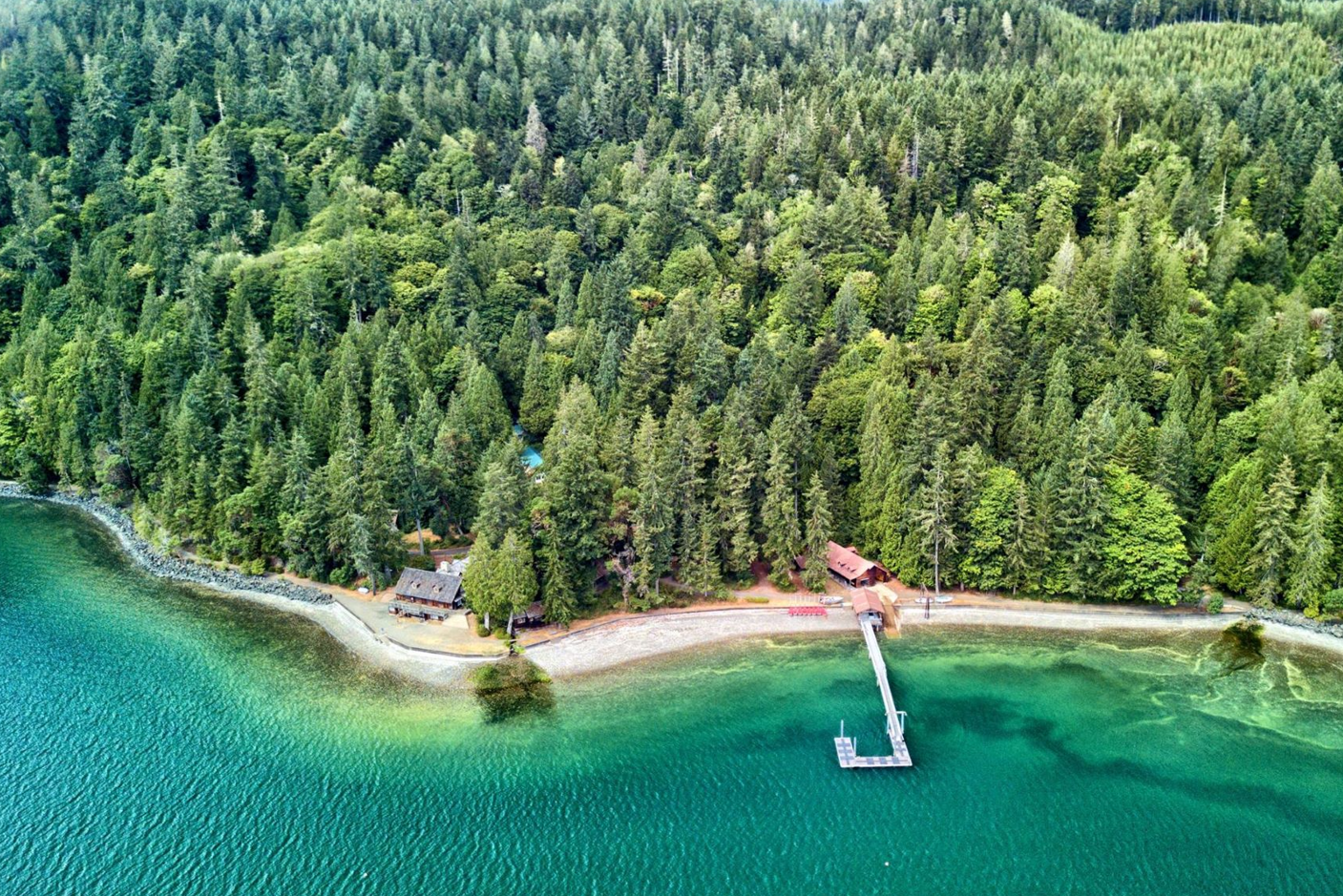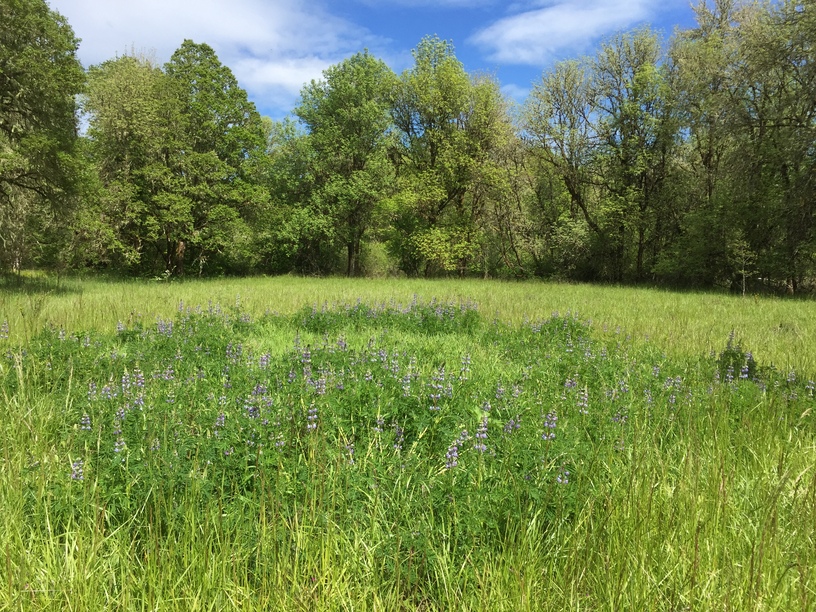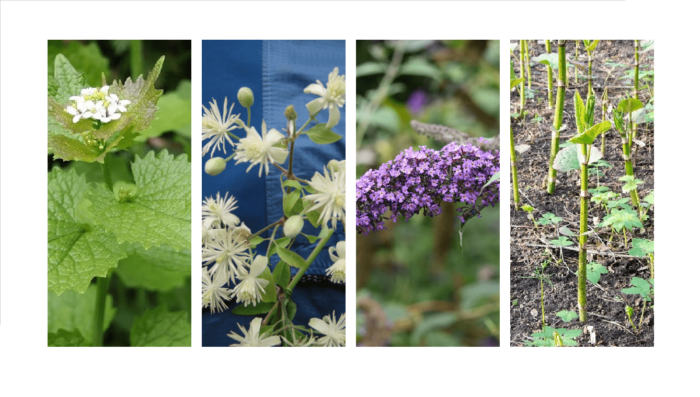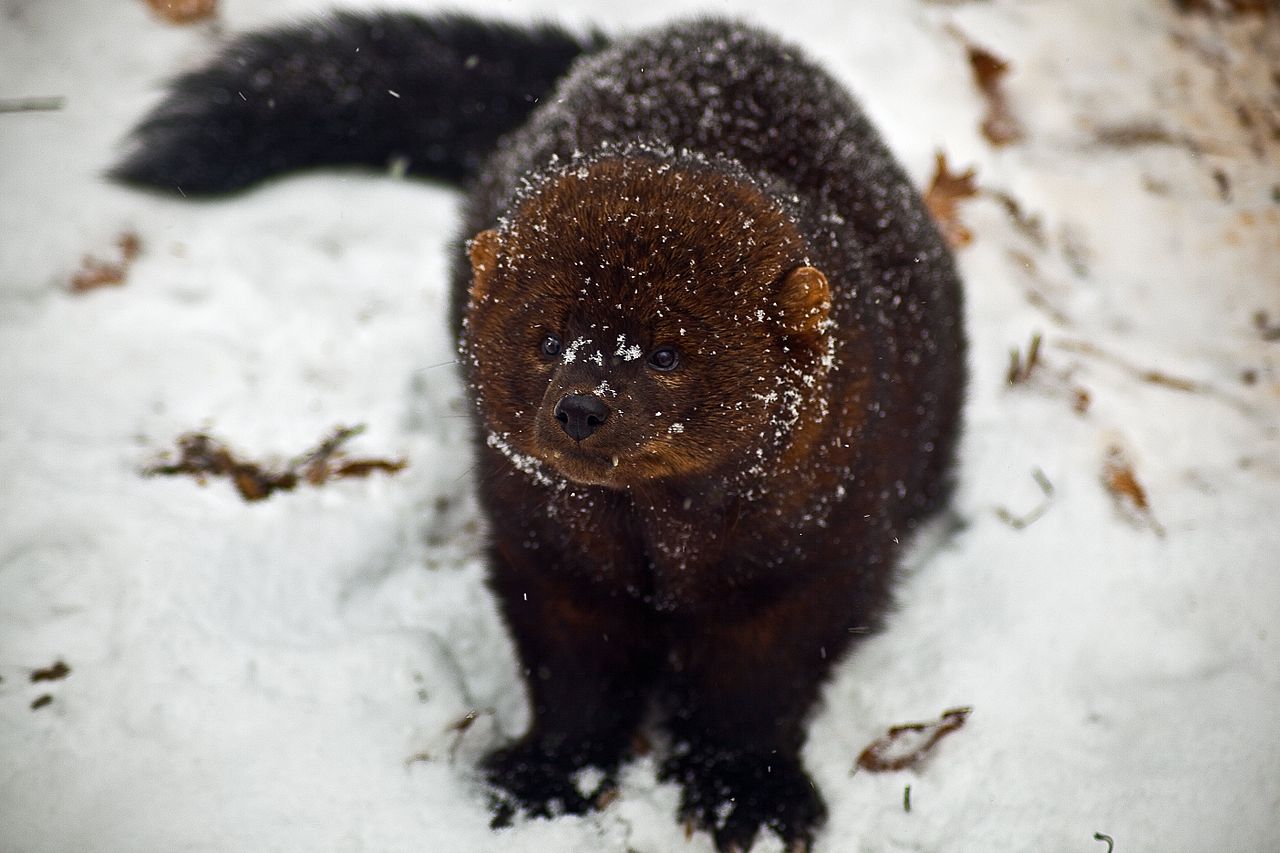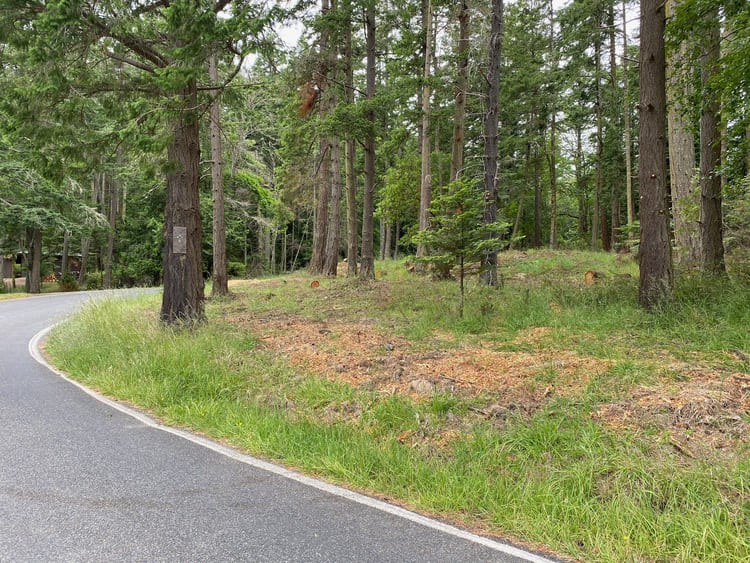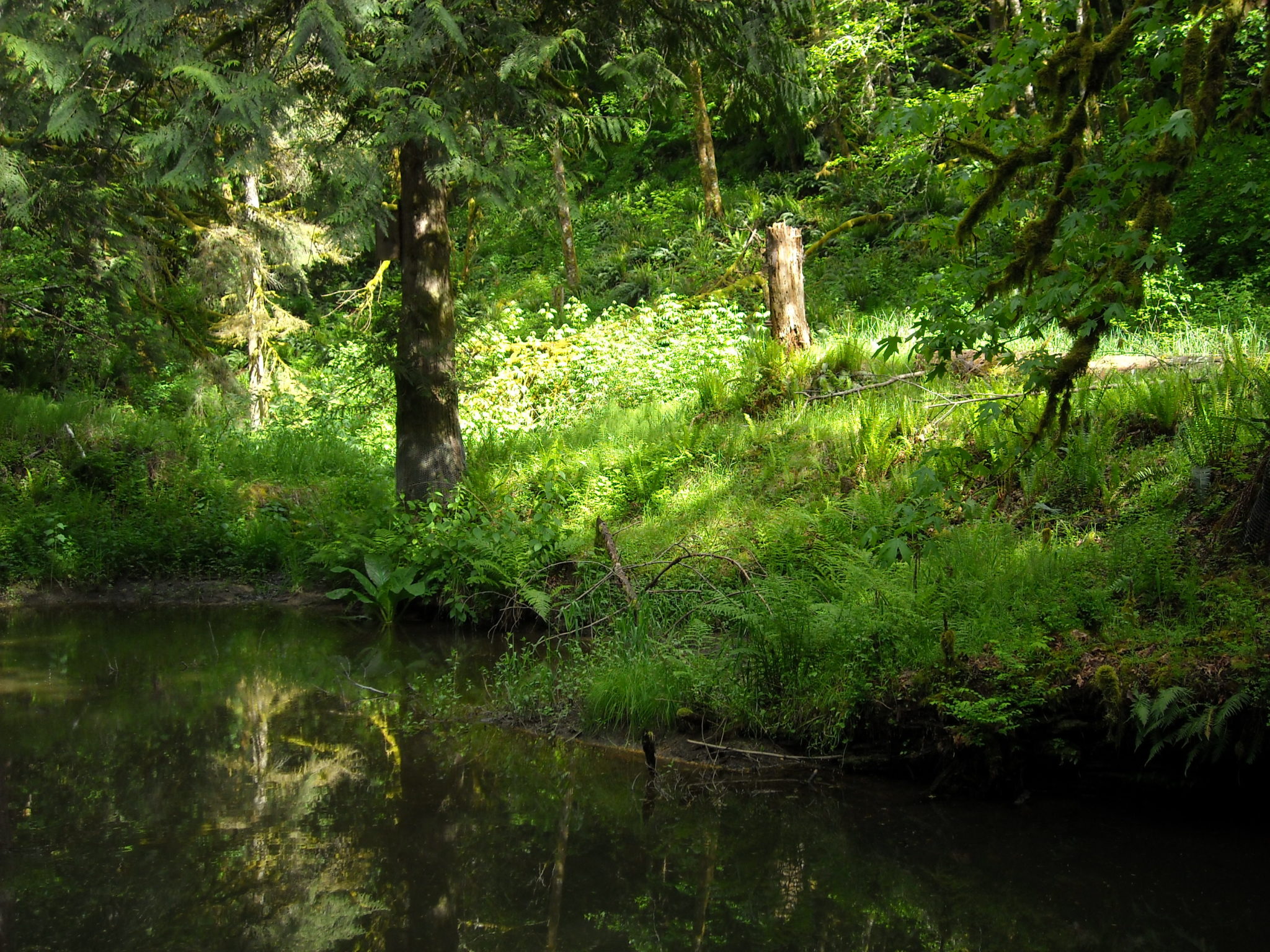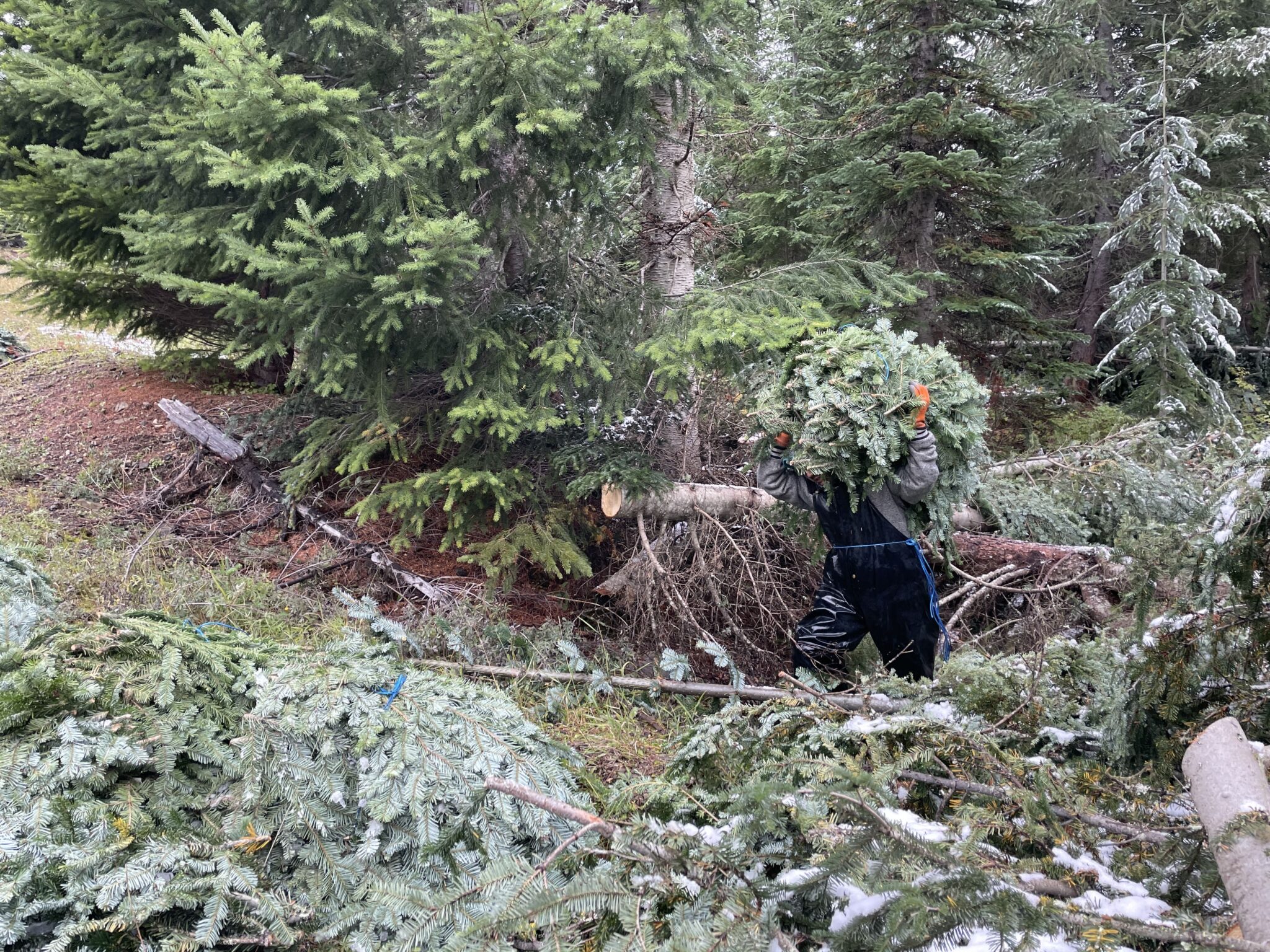For fifteen years, the Deumlings have been experimenting with planting less-traditional tree species—ones more tolerant to a warming climate—including Incense cedar, Coast redwood, Giant sequoia, Oregon white oak, and Ponderosa pine. They’ve also been sourcing Douglas-fir seedlings from farther south, where they may already be adapted to a warmer and drier climate.
November Fireside Chat: Let’s talk about mushrooms, baby!
NOVEMBER FIRESIDE CHAT | NOVEMBER 8, 2023 | 6pm – 7pm | ON ZOOM At this month’s Fireside Chat, NNRG Forester Gustavo Segura Flores will share some of his experience with maps! Bring your favorite fall drink, curl up in front of a fire or heater, and get ready to put yourself on the map. […]
Riparian Restoration Along the Skookumchuck River
Often when landowners come to NNRG for forest restoration help, our aim is to turn a dense, uniform forest that is susceptible to pests, disease, and fire into a more heterogeneous, resilient forest that supports a diversity of wildlife habitat and (sometimes) provides long-term timber revenue. In 2021, NNRG was hired to spearhead an entirely […]
July Fireside Chat: Practical Forest Restoration for Small Woodland Owners
JULY FIRESIDE CHAT | JULY 19, 2023| 7:30-8:30PM | ON ZOOM Many forests in our region need active stewardship to achieve their ecological and economic potential. Years of single-species management, overstocked stands, invasive species, and neglect can make forests susceptible to a slow decline in ecosystem services. This month’s fireside chat will focus on forest […]
Still Waters Farm: Wetland Wasteland to Beaver and Waterfowl Haven
By the time Beth and Mark Biser bought Still Waters Farm in 1990, the 48-acre parcel of forest in Mason County, Washington was a shell of its former self. Its 20 acres of wetlands had suffered two major disturbances.
Ecological Forestry Put to the Test for Birds
This bird monitoring study, funded by a $25,000 grant from the Cornell Lab of Ornithology’s Land Trust Bird Conservation Initiative, is going to use recordings of birdsong and bird calls captured by the AudioMoth devices to understand how a set of ecological forest management activities impact bird populations.
New Free Workshop: Stewarding a Climate-Resilient Forest West of the Cascades
Learn hands-on strategies for managing healthy, resilient forests in Jefferson County. At this free workshop in Jefferson Land Trust’s Valley View Forest, professional foresters will introduce forest owners to a set of simple, hands-on strategies for increasing their forests’ resilience in the face of a warmer and drier climate. Participants will develop a deeper understanding […]
TIME TO START THINKING ABOUT 2024 EQIP PROJECTS
The Environmental Quality Incentives Program (EQIP) is a technical and financial assistance program managed by the USDA’s Natural Resources Conservation Service. EQIP helps forest owners access technical expertise to develop and complete conservation practices that improve the health and productivity of their land.
Winter & Spring 2023 Washington and Oregon Native Plant Sales
The Winter Wet Season In The Pacific Northwest Is An Ideal Time To Plant Young Trees And Native Shrubs! Planting native trees and shrubs enhances forest biodiversity by providing habitat for wildlife and forage for pollinators. It’s also a great way connect to the land and increase your aesthetic and recreational appreciation for the forest. […]
Monitoring Mount Heaven
Last spring, Paul Hansen and his 16-year-old granddaughter found themselves tromping through his forest near Mount Rainier (Tahoma), in Washington. Both were searching for old PVC pipe remnants and rebar stakes hammered into the ground, but their motives that day were split. Paul was hoping to find the centers of circular plots he’d marked out 10 […]
What Happened in 2022? 10 of NNRG’S most notable accomplishments
2023 is fast approaching, and we’re eager as beavers in a wetland forest to start some of the new projects we have planned. But before we start construction on our next lodge (so to speak), we’d like to take a moment to reflect on some of NNRG’s most notable achievements and activities of 2022. […]
Forest Bathing Takes on New Meaning in This Treehouse Airbnb
Forest owners looking for ways to profit off of their forests sometimes turn to producing non-timber forest products, or NTFPs. Some lease salal harvesting rights to greens companies; others make and sell evergreen wreaths made from cut boughs. One member of NNRG’s group’s FSC® certificate has created a successful business out of a less conventional NTFP: […]
Estate Planning Advice from A Family Forest
Planning what happens to your land after you pass on is a critical part of good forest stewardship. If you don’t plan to sell your land or pass it on to another family member, you’ll need to figure out not just how it will be managed in the future, but who will manage it. That involves a lot of decisions, and likely a lot of outside help. But even if you do plan to leave the land to your kids or other family members, don’t assume that transition will happen smoothly on its own.
Camp Robbinswold: Growing the Next Generation of Trees and Leaders
Nestled on the edge of the Olympic Peninsula about halfway down Hood Canal, Camp Robbinswold includes 570 acres of young, older, and mixed-age forest that is Forest Stewardship Council® certified through NNRG’s FSC® group certificate. The camp property includes 1.5 miles of shoreline and tidelands, a 10-acre freshwater lake, 350 acres of forest managed for […]
Habitat Burns, Burning Love, and Loving Butterflies at Beazell Memorial Forest
It’s that classic love story: boy meets girl, boy buys forest, girl marries boy, boy plants 100,000 trees. Okay, not classic, exactly, but sweet, definitely. When Fred Beazell bought over 500 acres of former farmland near Corvallis in the early sixties, he had dreams of living on the land with his long-time sweetweart, Dolores Anthony. […]
Controlling and Identifying Invasive Woodland Plants
RESOURCES FOR IDENTIFYING AND CONTROLLING FLORA NON GRATA IN YOUR WOODLANDS Invasive plants such as the ones listed on this page can damage natural resources. They can quickly erode biodiversity in woodlands and reduce wildlife habitat by overtaking and toppling trees, eroding streambanks, crowding out and shading out native plant species, and even changing soil […]
A Conservation Agreement for Fisher and Forest Owners
Header image via ForestWander. The fisher (Pekania pennanti) is a small, carnivorous mammal native to North American forests, a member of the weasel family with quick reflexes and great climbing skills. It’s roughly the size of a housecat, and is indisputably cute. Though now very rare in the Pacific Northwest as a result of habitat loss, […]
An EQIP Success Story from Shaw Island, Washington
Around 200 people call Shaw Island home, among them Lynn Bahrych, formerly a Commissioner for the Washington State Conservation Commission and co-chair of the Washington State Soil Health Committee. Lynn is steward and owner of Osprey Pond, a 64-acre forest and wildlife pond on the northwestern end of the island. With financial support from the Environmental Quality Incentives Program (EQIP), Lynn has embarked on a project to transform her tinderbox “wall of trees” into a fire- and climate-resilient forest that more closely resembles the natural, fire-adapted forest of millennia past.
The Conservation Stewardship Program (CSP) can help fund your forest stewardship
For forest owners who have been stewarding their forests for a longer time, the Conservation Stewardship Program (CSP) may be a convenient additional source of funding for ongoing stewardship activities. This article explains what CSP can fund, and who can apply.
A Holiday Bough Harvest at Nisqually Community Forest
NNRG recently facilitated a unique harvest at Nisqually Community Forest, a community-owned and community-managed forest at the foothills of Mount Rainier. The Community Forest is the site of a project that is testing the effects of thinning to different densities on a stand’s ability to adapt to the hotter, drier climate of the future. In […]

